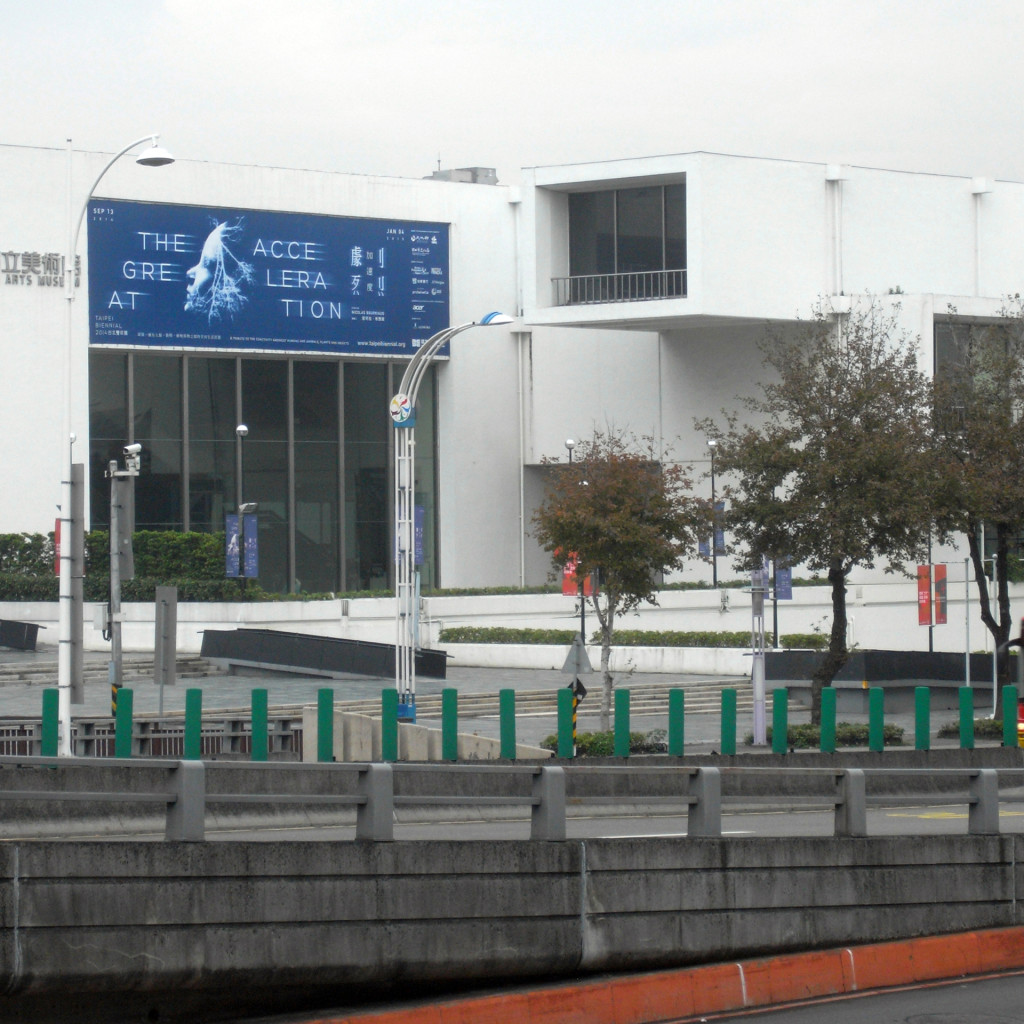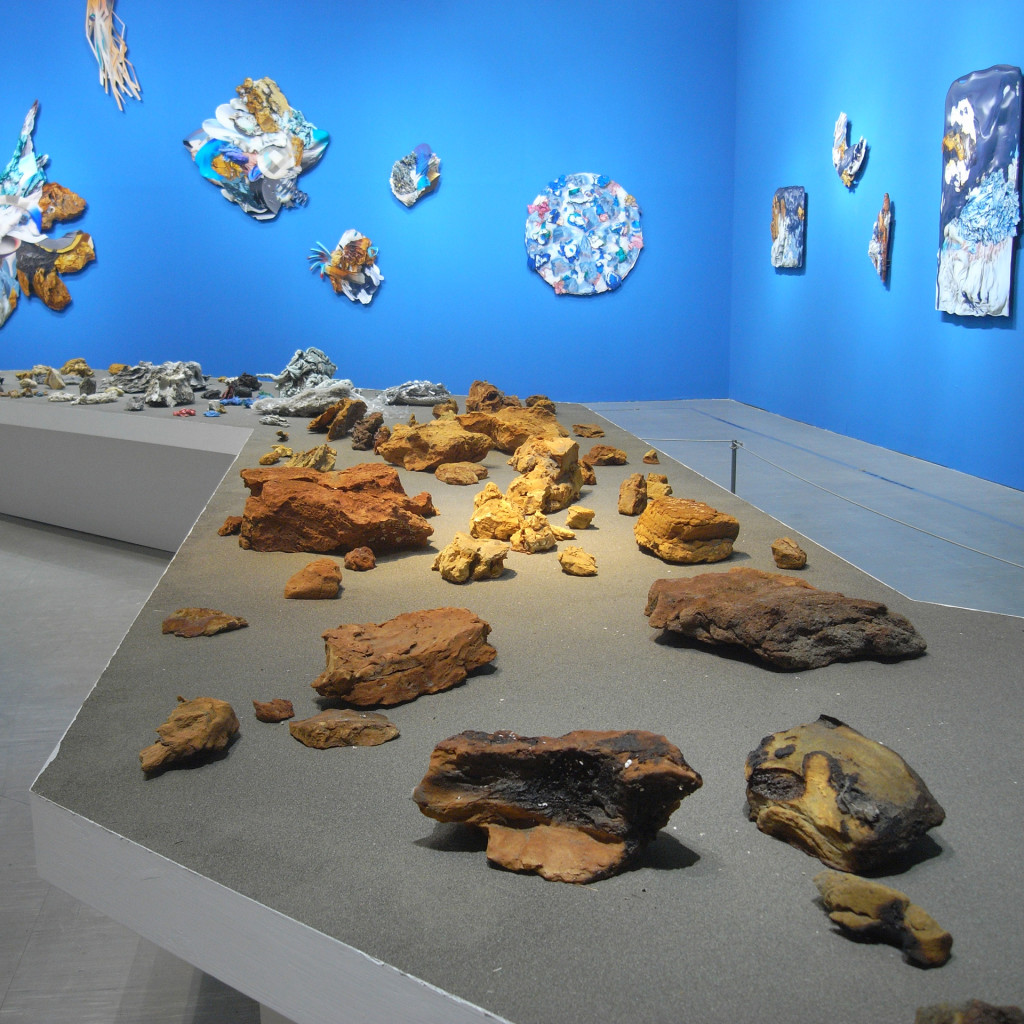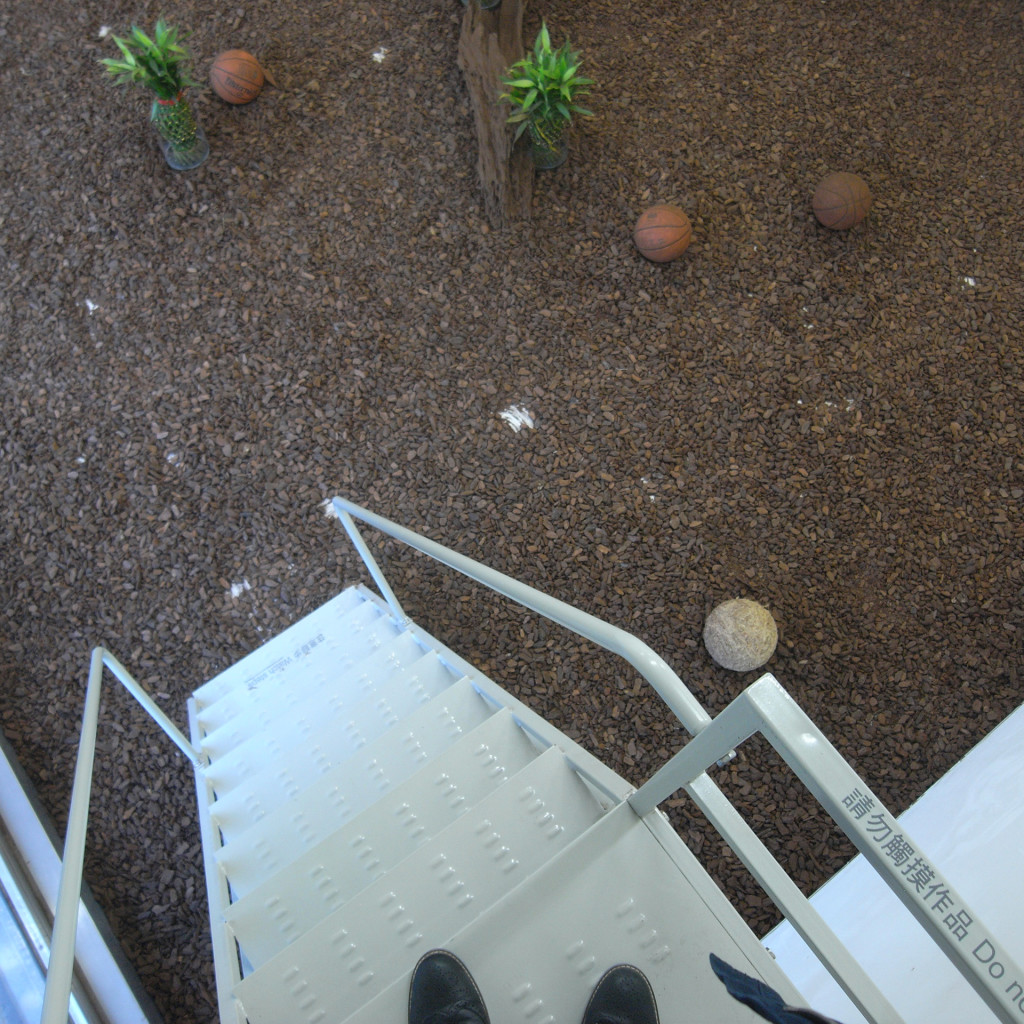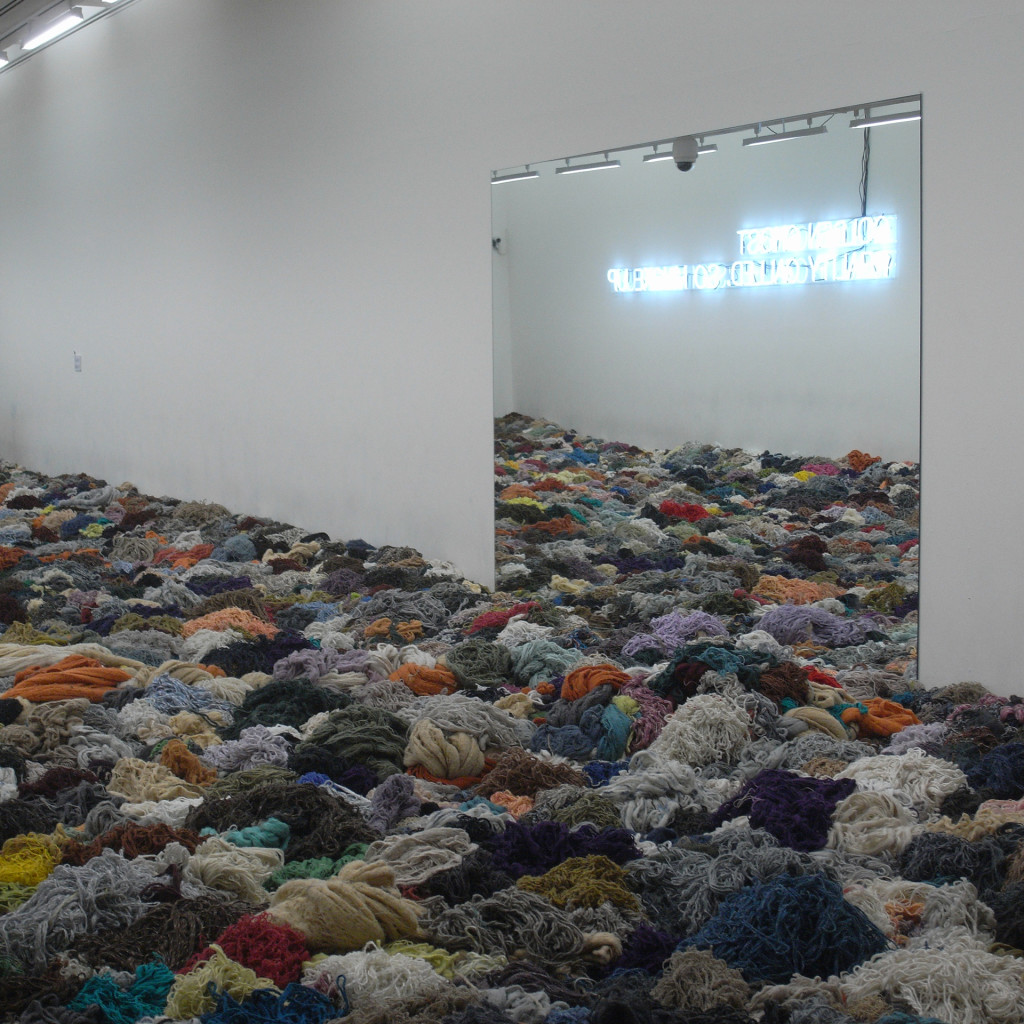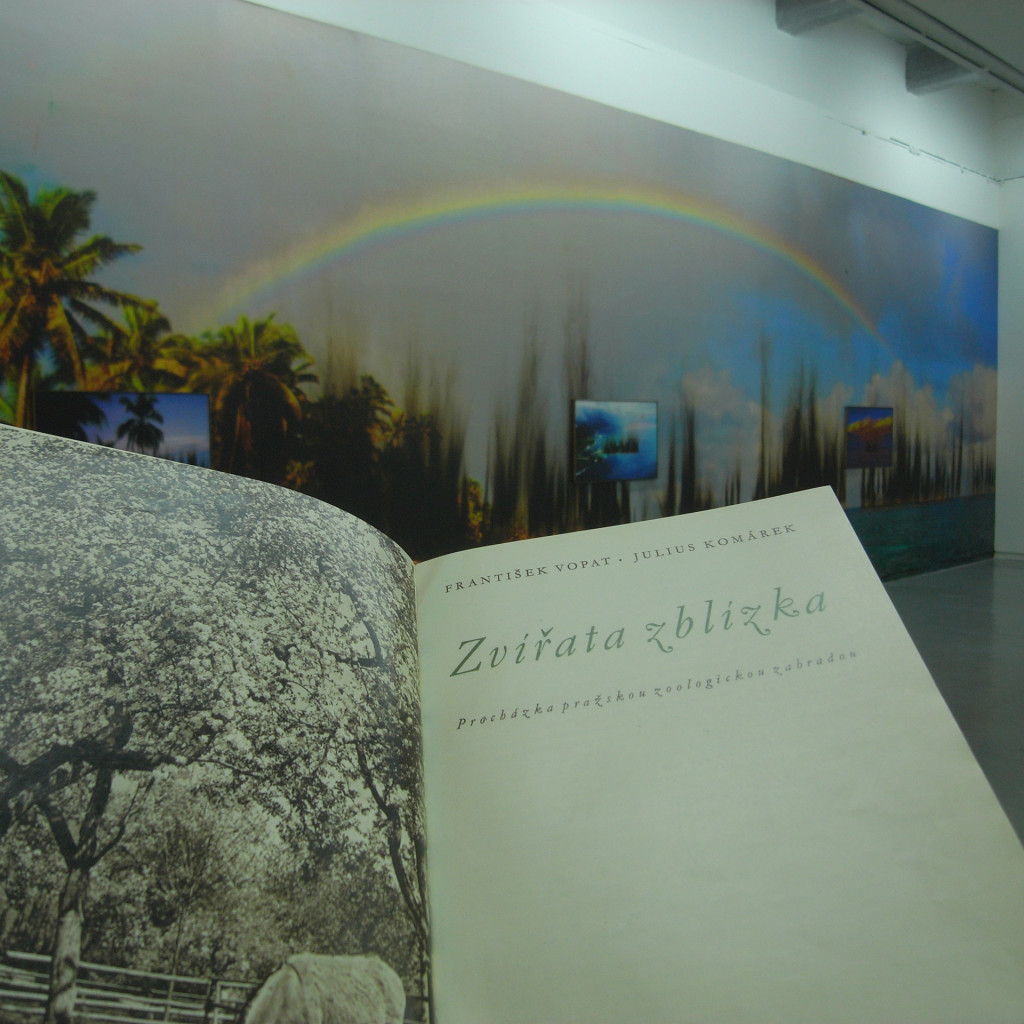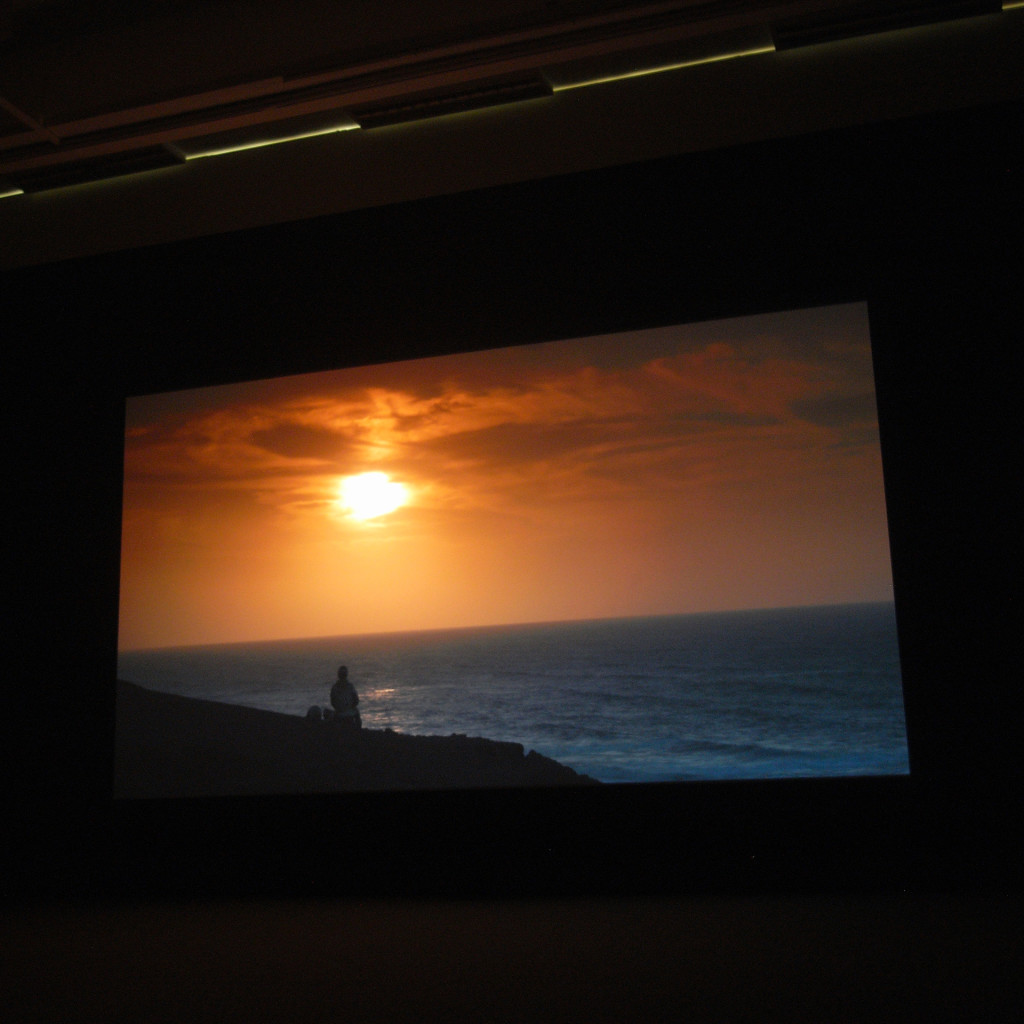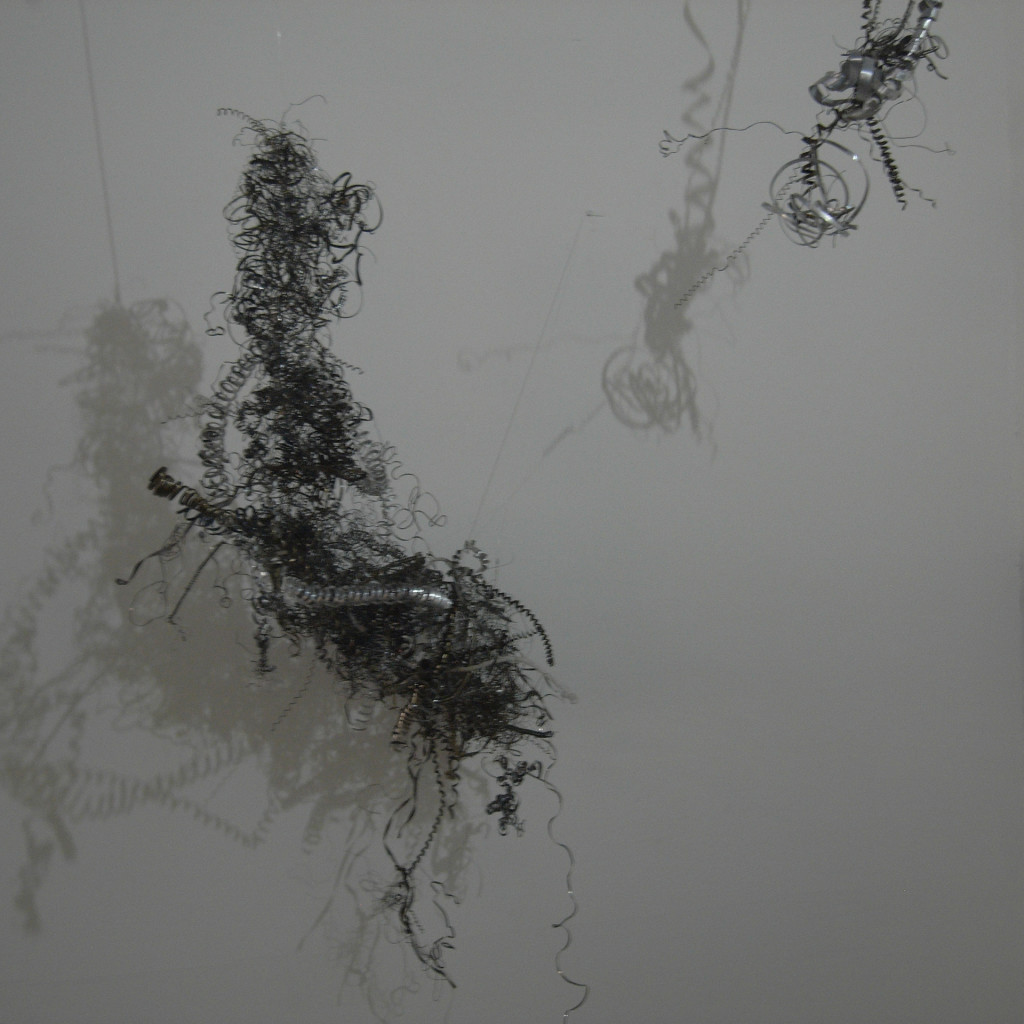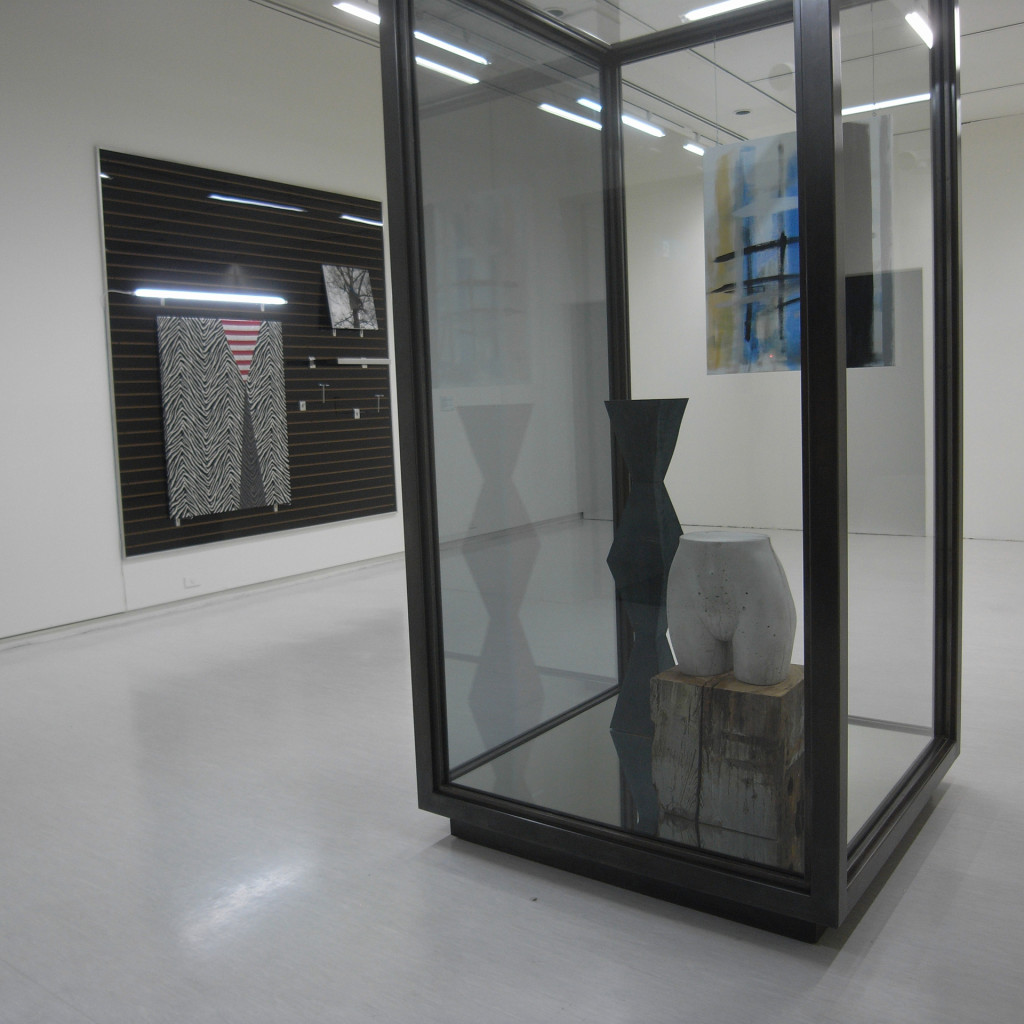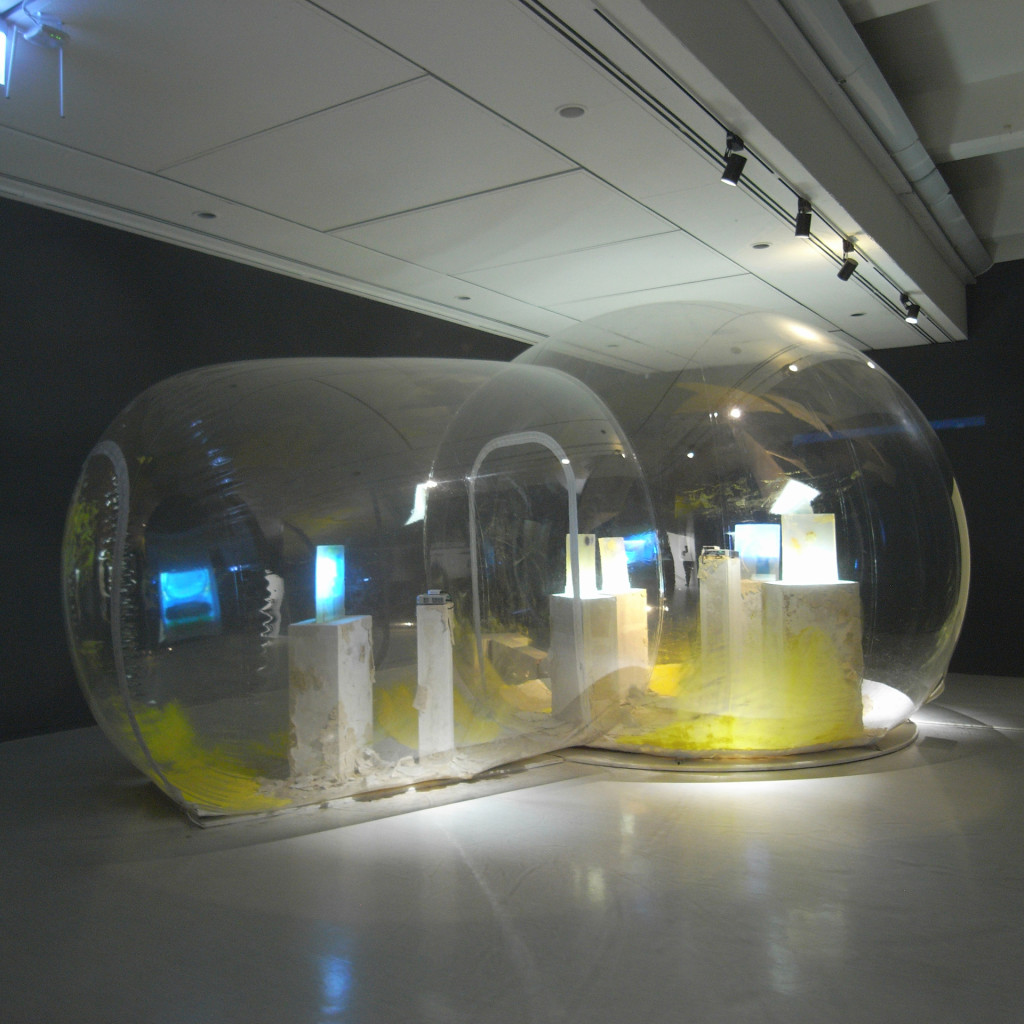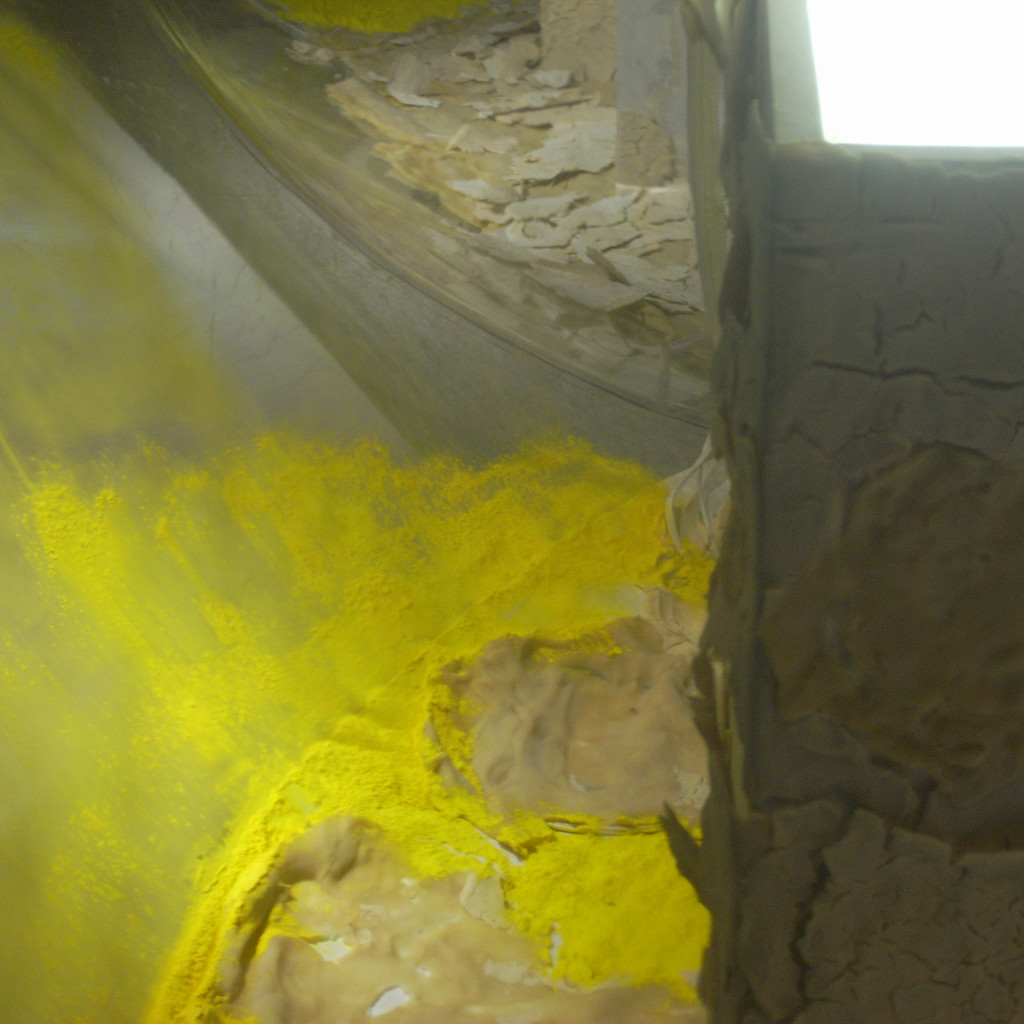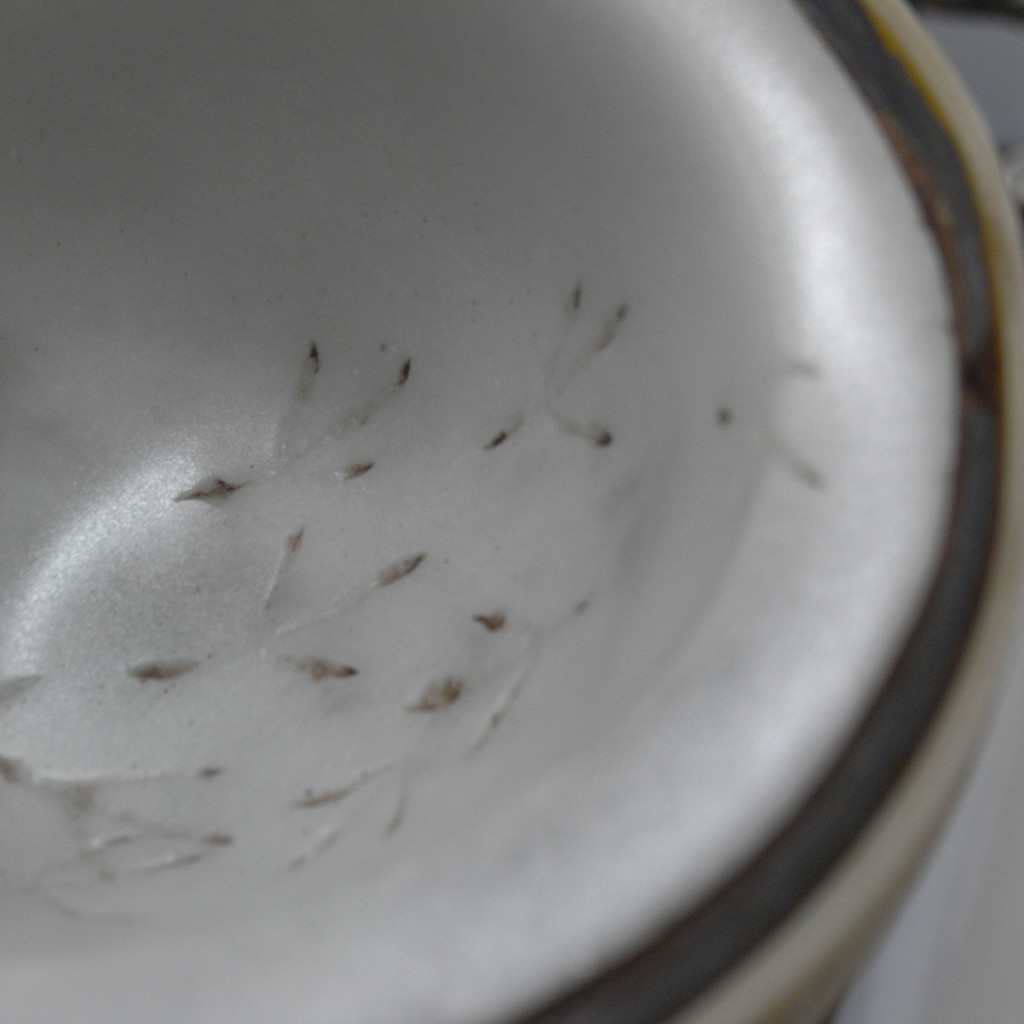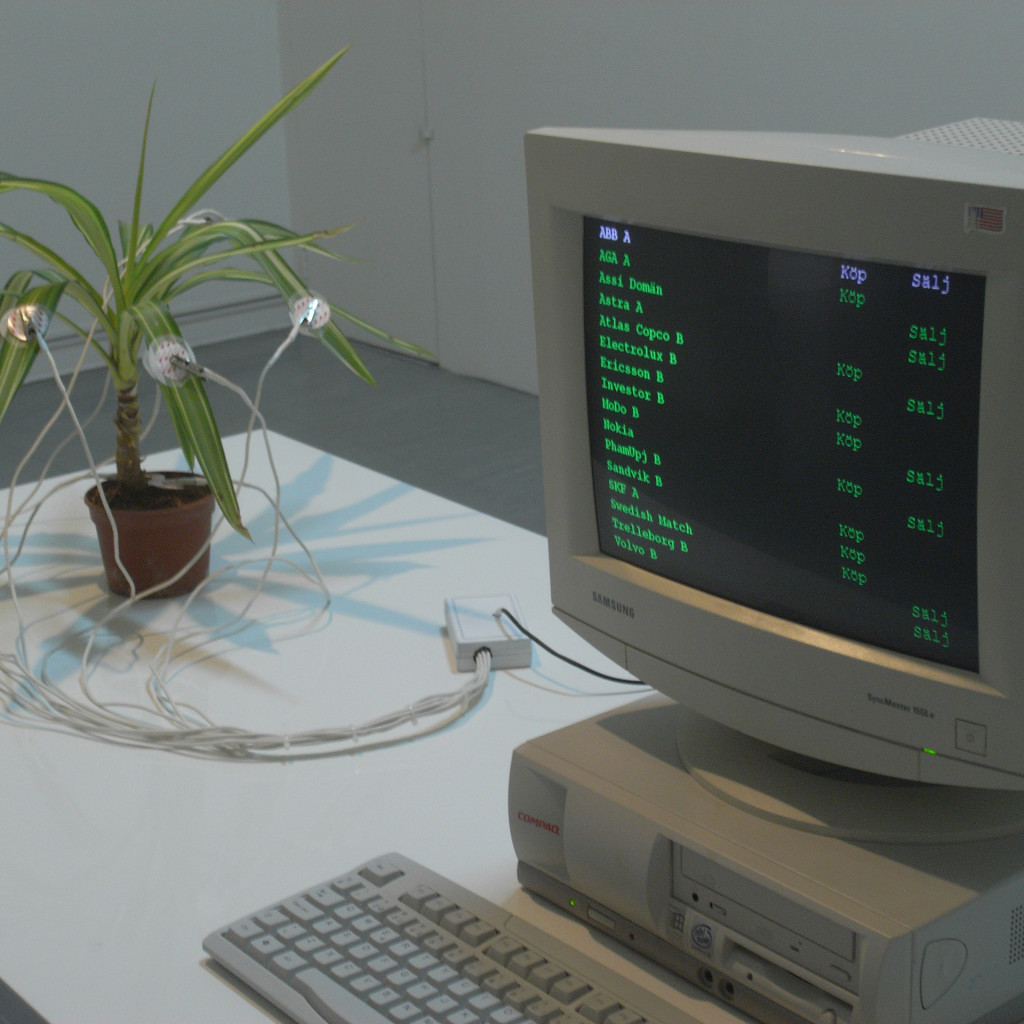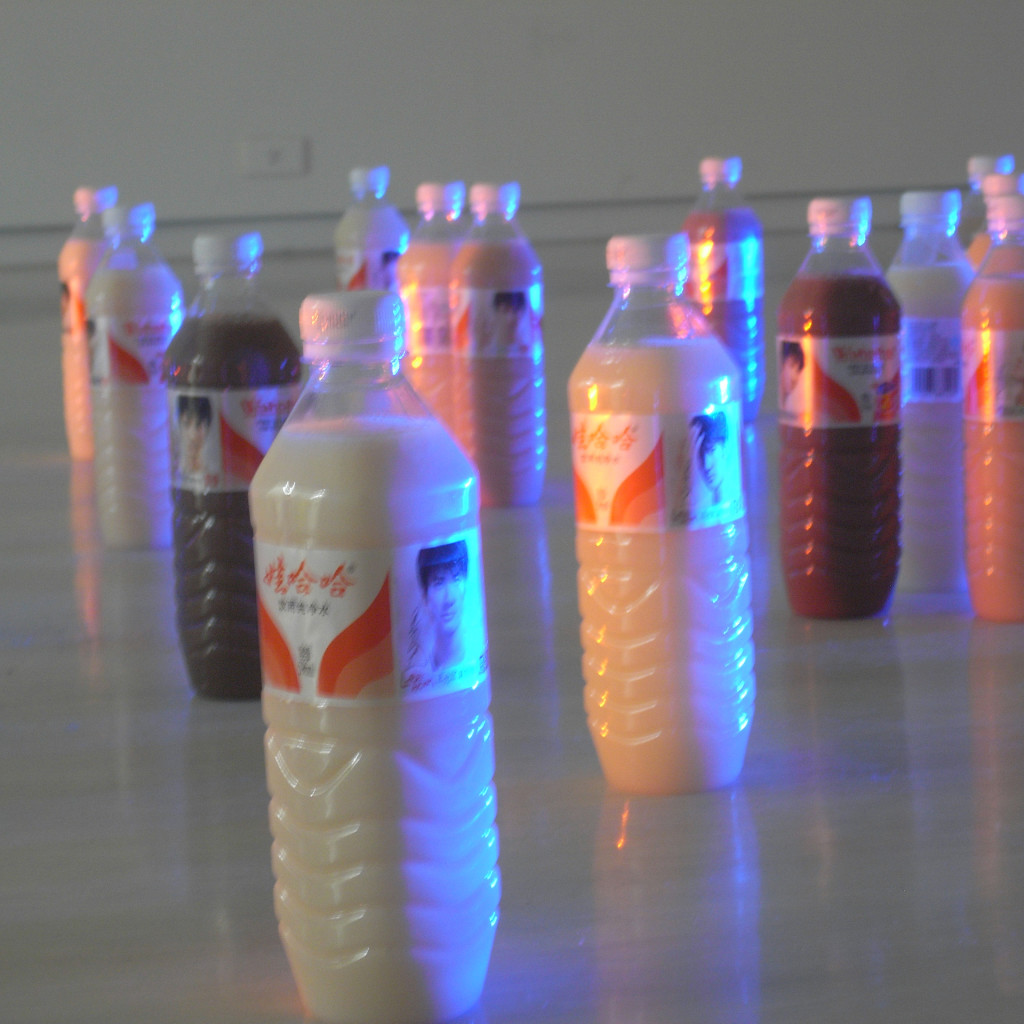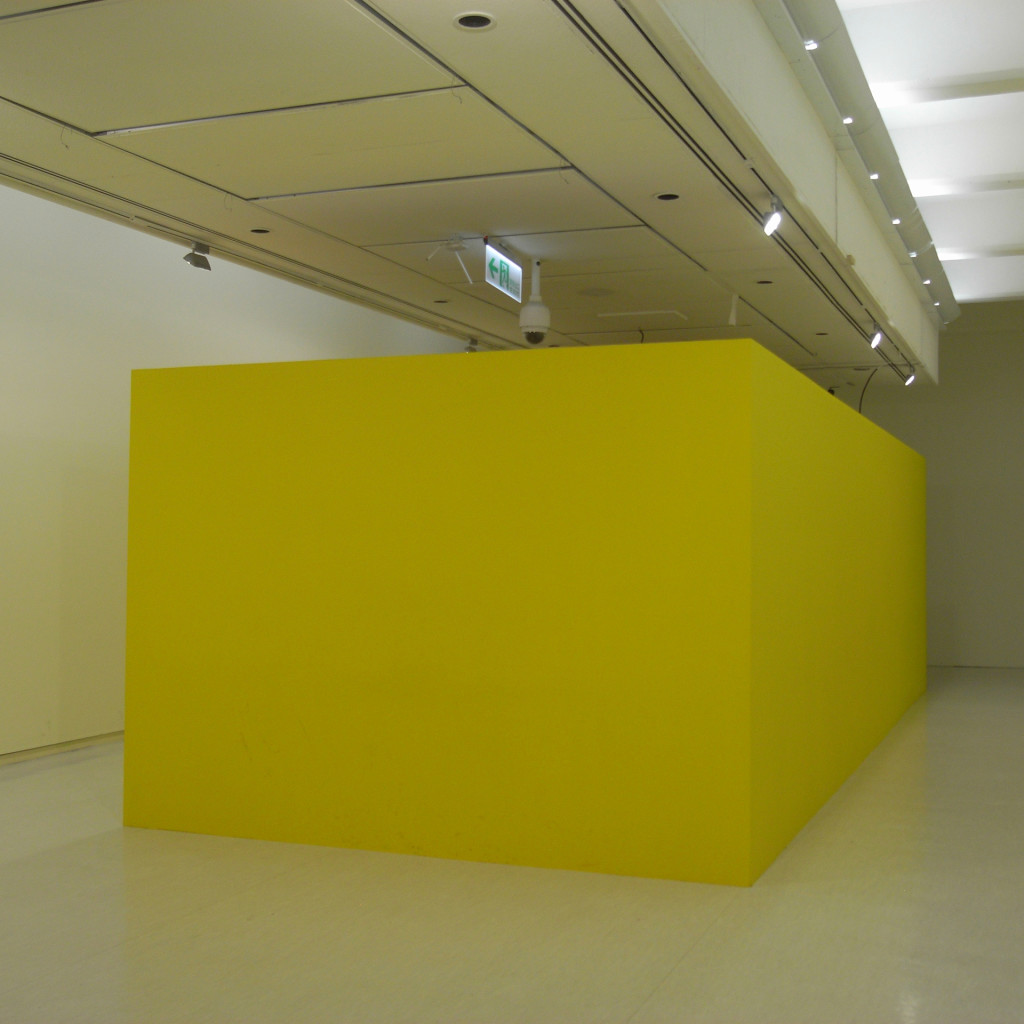Taipei Fine Arts Museum, September 13, 2014 – January 4, 2015, curated by Nicolas Bourriaud.
I am writing this a few months after my visit, so my memories are filtered through the time that passed, and supported by photos, but that shouldn’t matter. Even now a few month later I still find myself returning to the experience of visiting TB2014, so I think it’s important to record some of my thoughts.
When I first saw the TB2014 announcement two things came to my mind. First, I was excited to see Nicolas Bourriaud as the curator. I had him mainly connected with the Palais de Tokyo Gallery in Paris as well as with his writing – books like Postproduction and Relational Aesthetics. The other thing which came to my mind when I saw the theme of the exhibition, focusing on the relationship between humans and the environment, was a worry to be presented with some over-didactic eco-education as it is often served by art-cum-corporate-social-responsibility-projects in Asia. But would Bourriaud go as low as that? Sure he wouldn’t.
Compared to the previous TB (2012) curated by Anselm Francke, Bourriaud’s one was much ‘lighter’. Even the exhibition booklet has shrunk to the size of a thin leaflet compared to Francke’s exhibition guidebook with its own reference system. Most rooms at the TFAM were showing a small number of artworks, some only one artwork per room. This gave each artwork enough space to breathe and the audience enough space to observe and engage with the artwork without distraction.
A lot of the artworks were based on the aspect of materiality – their physical presence in a specific material. The understanding of these objects depended less on reading the artist statement and more on looking, almost touching the object with one’s eyes (or hands sometimes) to understand it. One then related the materials s/he saw to his own sensory experience with these materials. As examples we can take Peter Buggenhout’s large dust-covered sculptures or Wu Chuan-Lun’s naturally made plastic ‘rocks’. In some instances the audience could directly engage with the materiality of the work, like walking inside of Luo Jr-Shin’s Terrarium made from wood and stone with a wood chip covered floor or wading through Surasi Kusolwon’s room filled knee-high with soft colorful thread waste.
It was this material connection to the artwork which exemplified the ‘relational’ aspect which became a bit of Bourriaud’s brand. The exhibition delivered a sensory experience, with a layered meaning, and that is what counted for me. I heard some opinions saying that this TB was not as good as the last one (Francke’s) etc. But I think it is hard to judge it like that. I agree that is was less intellectual and deep. But sometimes that ‘depth’ and ‘research based-ness’ of Anselm Francke can get in the way between visitors and artworks. And I doubt anyone has watched and read all the materials on display in his exhibitions. There the strategy is to overwhelm the visitors with depth and breadth, so they walk away with a feeling of having encountered something deep and meaningful, without, however having truly understood. Bourriad on the other hand engages the visitors directly. Sometimes this means using very simple means but that is what sometimes is needed. Placing the visitor in a room solely with one or two large sculptures. Letting him walk through an environment. Include an artwork featuring massage chairs the audience can use. Sometimes less can be more. Rather than comparing TB 2012 and TB2014 on one scale, one has to acknowledge that both Francke and Bourriaud worked with very different scales and approaches to audience engagement.
To return to my initially stated worry, there have been moments when the eco-ideology was trying to push its way into the exhibition, and that was the moments I felt ambiguous about. For example the work of Nicolas Uriburu – green paintings, green sculptures, dying a river green, all made with an ecological agenda. Over the top, I think. And next room to it Shimabuku exhibiting a real, living tortoise in the gallery. Something between a zoo in a museum and animal torture. Also Huang Po-Chih Production Line work right at the very entrance did not fit in very well – making/shipping shirts between China and Taiwan – it was about economic development more than about the natural variables and materials of the environment, inherently re-stating development myth. Generally speaking the beginning of the show was a bit disappointing, but in hindsight, that may be because my sensory system needed some time for “recalibration” to a more sensory experience mode.
Overall, I felt TB 2014 was truly enjoyable. You could walk through the show in a few hours, and you walked out feeling enriched and refreshed, and not exhausted and confused as it sometimes happens in these big, wonderful but too overwhelming shows. Nicolas Bourriaud’s contribution to the TB series was a very delicate and sensitive approach at selecting artworks and assembling a show which communicated on a sensory level and let the visitors have a rest from the overly logical and information-based environment we find ourselves in. The result was quite unique I appreciated the show for that.
Now some more pictures. Not all artworks are covered, only some. The order follows the viewing order (from 1F entrance to 3F exit).
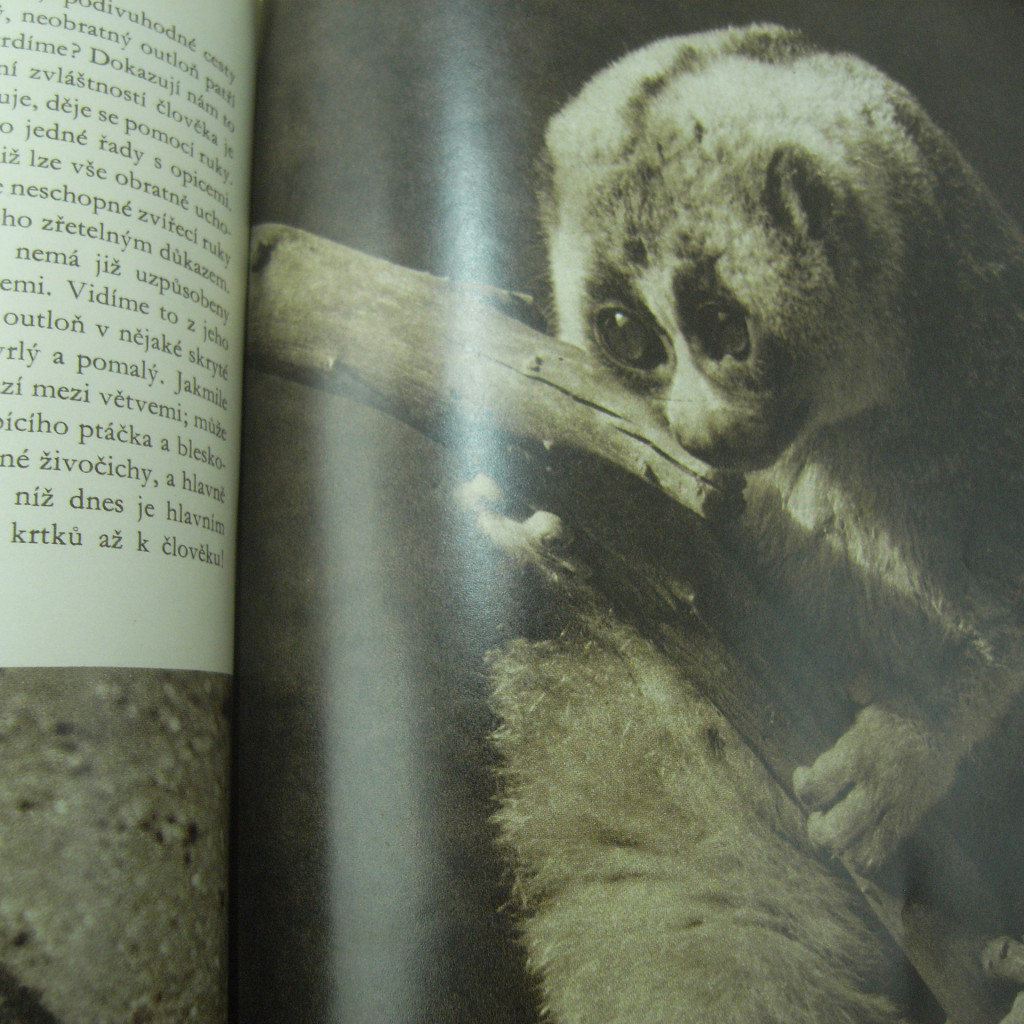
Harold Ancart “Ark” detail (1,248 books stacked inside 52 cardboard boxes, labeled with their content).

Surasi Kusolwong “Golden Ghost (Reality Called, So I Woke Up)” – as the story goes, visitors can search for gold necklaces hidden between the industrial fabric waste.
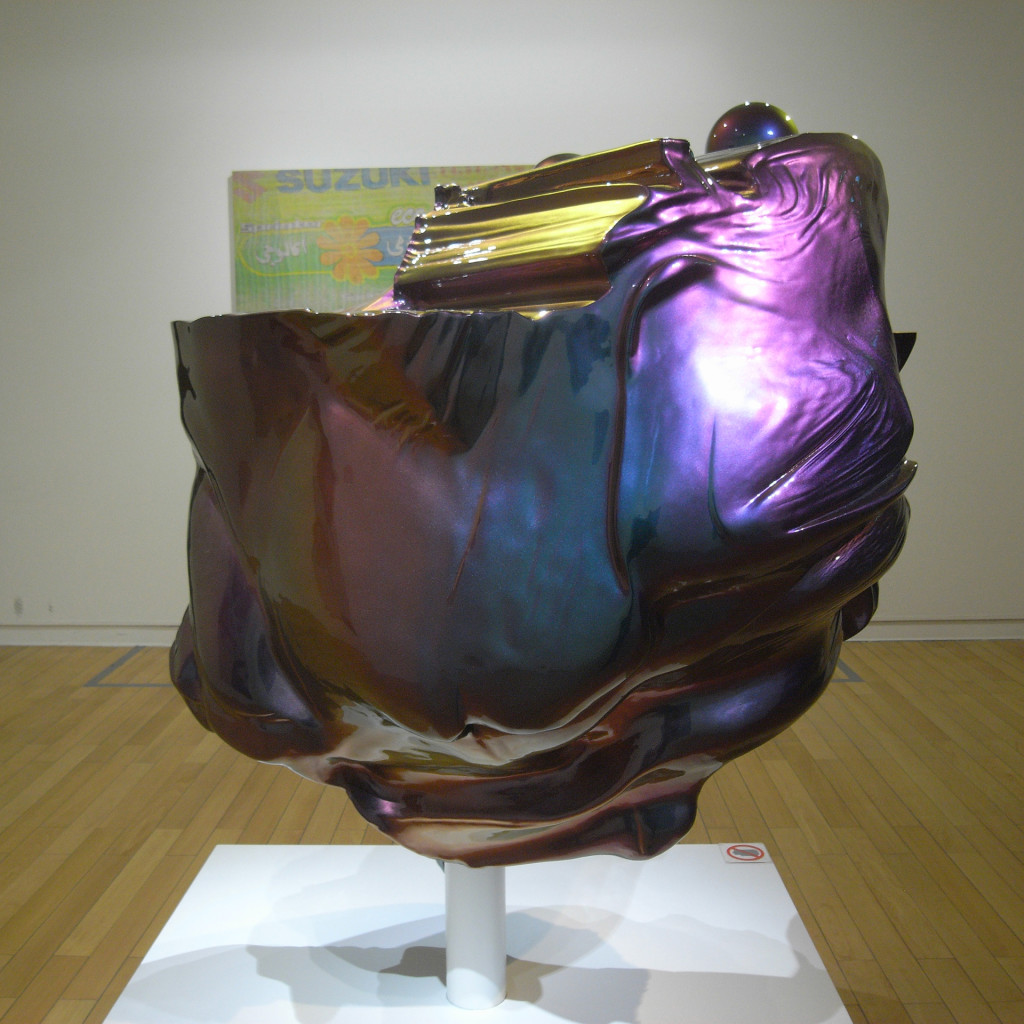
Shezad Dawood “Why Depend on Space and Time” – a very weird sculpture, which could as well be a result of an accident; interesting in its complex shape and disgusting material.
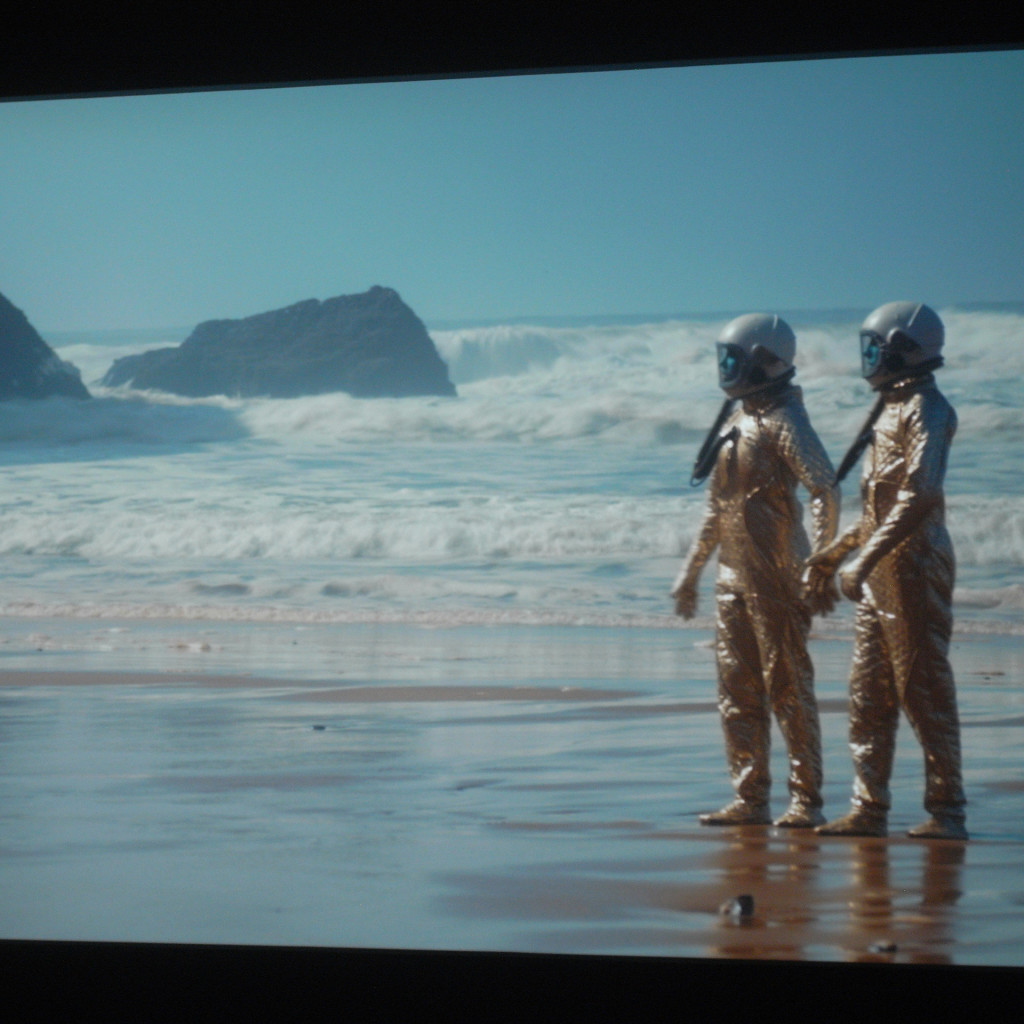
Shezad Dawood “Towards the Possible Film” – a bit over-romantic film. A joke on sci-fi movies I guess.
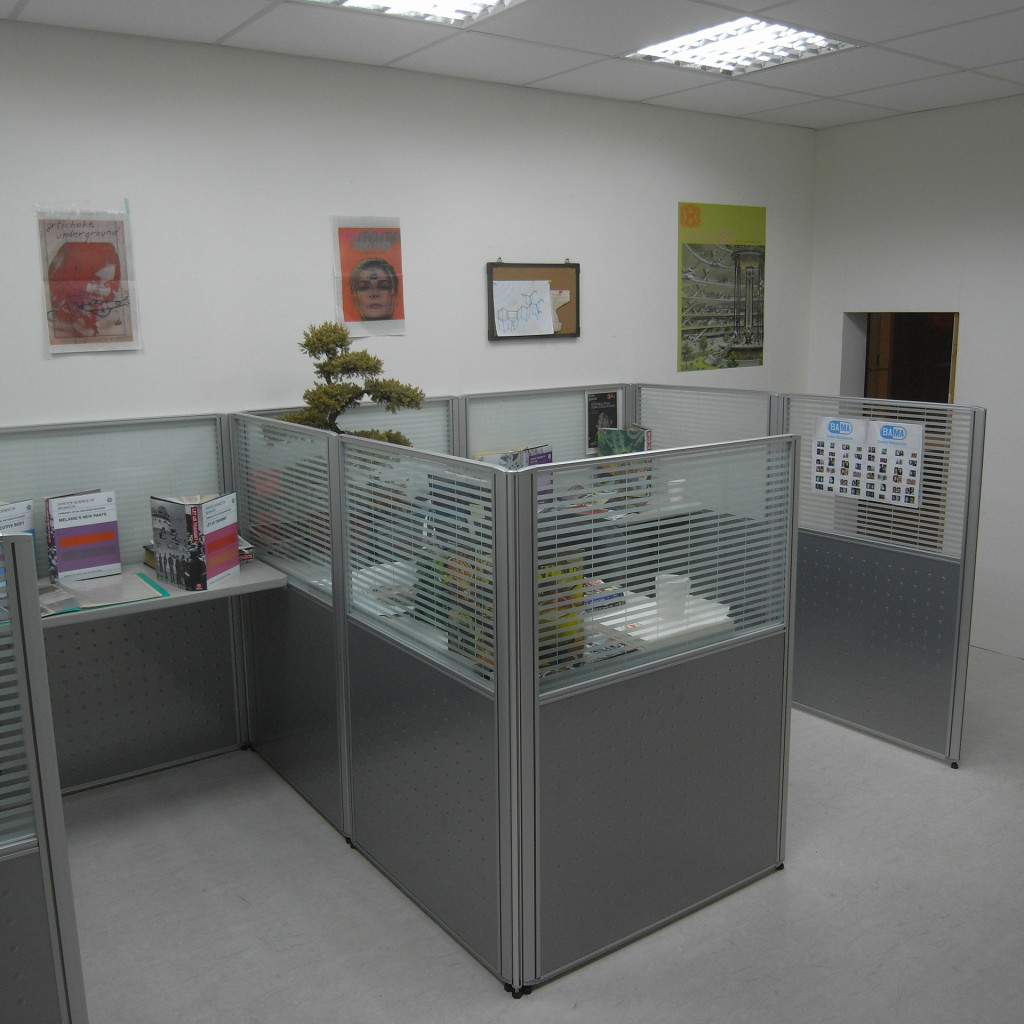
Jonah Freeman & Justin Lowe “Floating Chain (Fake Wall)” – a complex installation behind a fake wall, featuring a fake office, a mini-exhibition and a massage chair relaxation room – the ‘office’.

Jonah Freeman & Justin Lowe “Floating Chain (Fake Wall)” – a complex installation behind a fake wall, featuring a fake office, a mini-exhibition and a massage chair relaxation room – the ‘exhibit’.
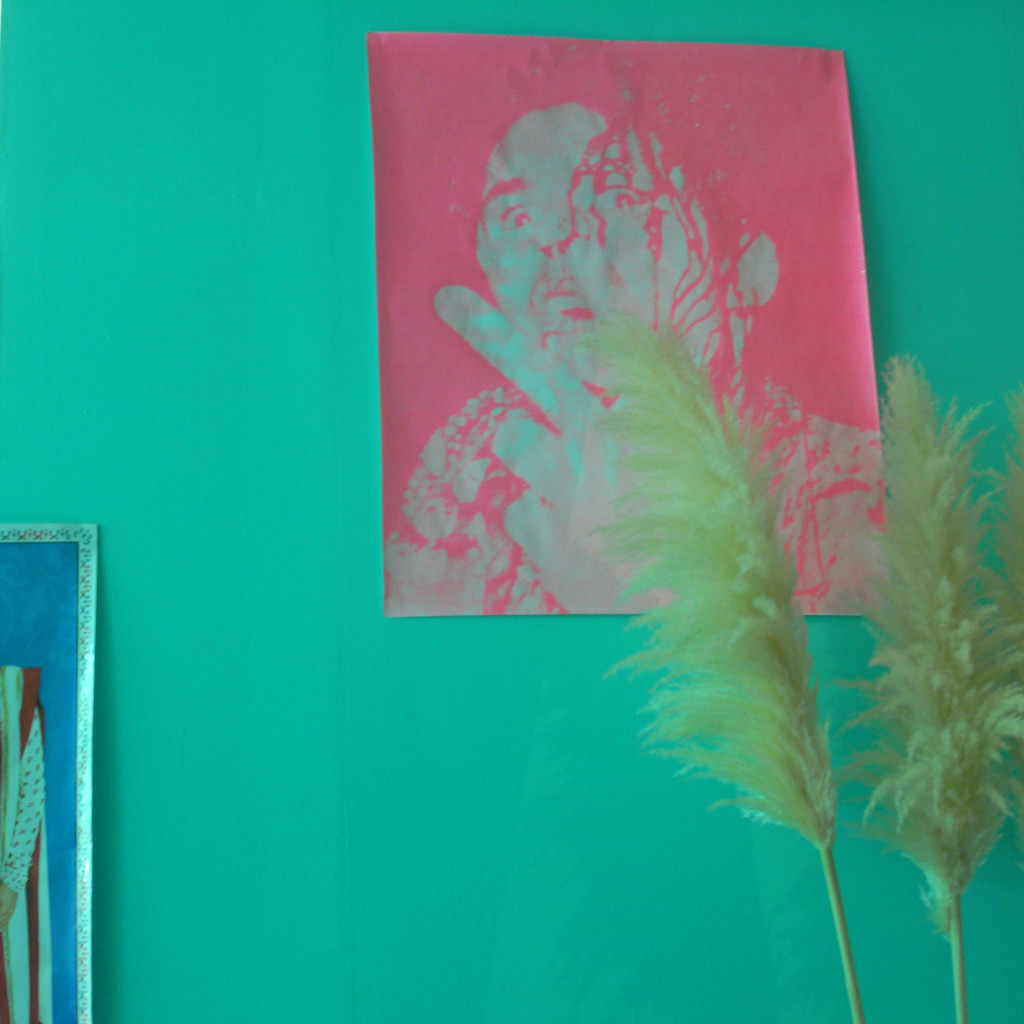
Jonah Freeman & Justin Lowe “Floating Chain (Fake Wall)” – a complex installation behind a fake wall, featuring a fake office, a mini-exhibition and a massage chair relaxation room – detail of relaxation room wall deco.
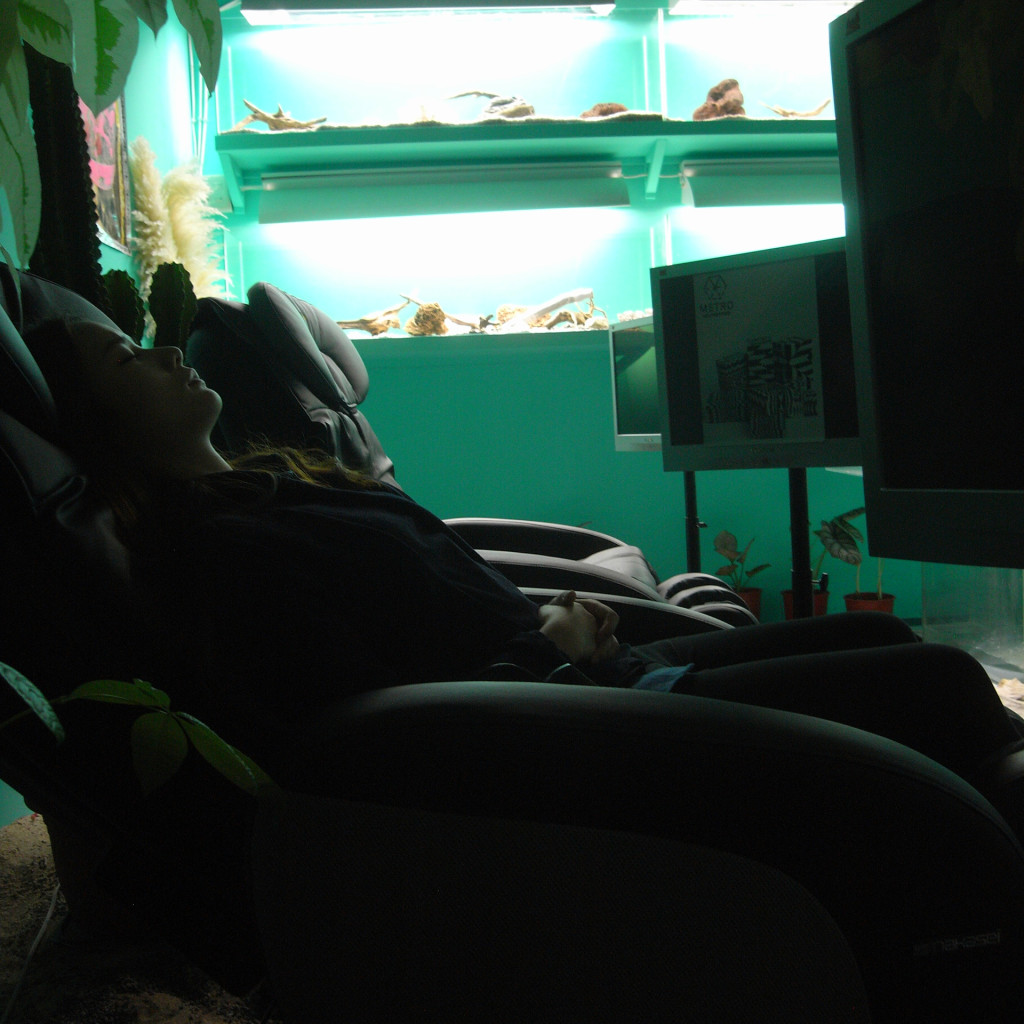
Jonah Freeman & Justin Lowe “Floating Chain (Fake Wall)” – a complex installation behind a fake wall, featuring a fake office, a mini-exhibition and a massage chair relaxation room – relaxation room massage chair in use.
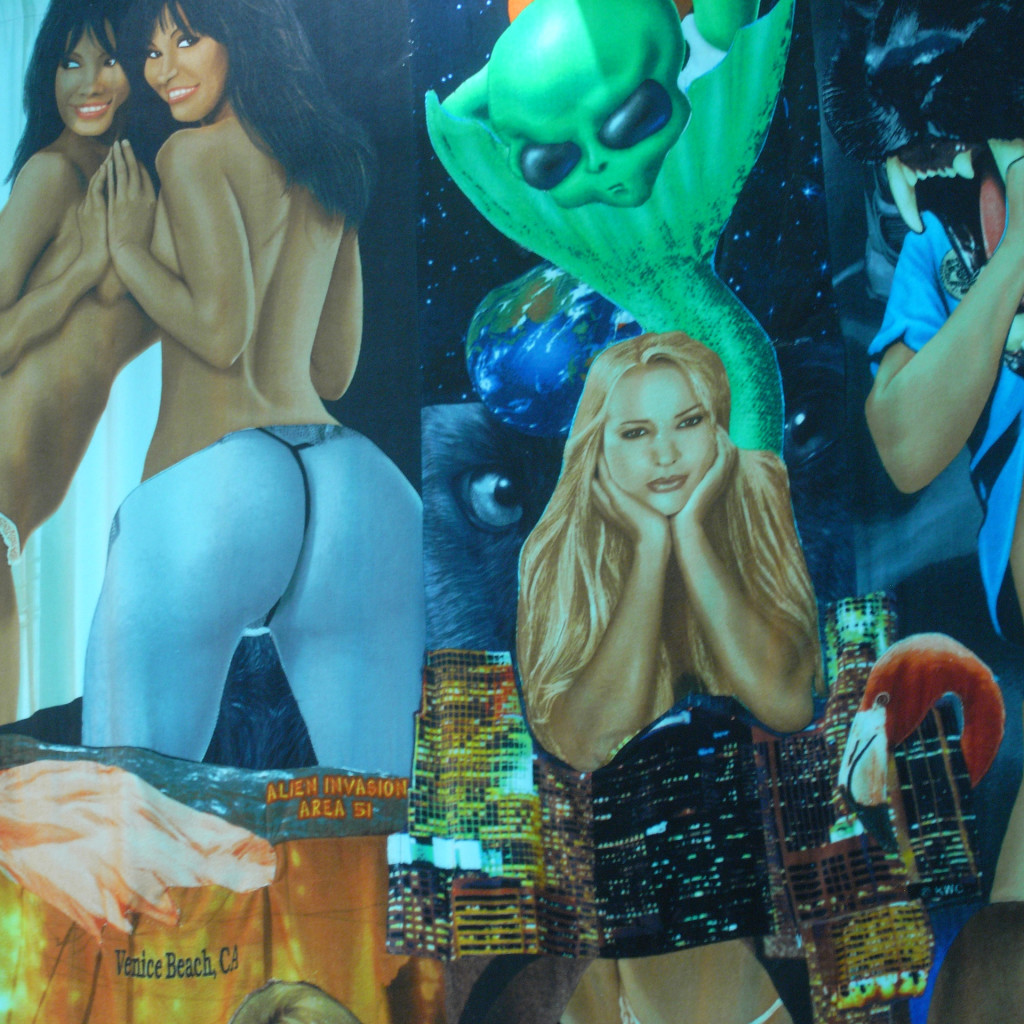
Jonah Freeman & Justin Lowe “Floating Chain (Fake Wall)” – a complex installation behind a fake wall, featuring a fake office, a mini-exhibition and a massage chair relaxation room – detail of relaxation room wall deco.

Jonah Freeman & Justin Lowe “Floating Chain (Fake Wall)” – a complex installation behind a fake wall, featuring a fake office, a mini-exhibition and a massage chair relaxation room – here the ‘relaxation room’.
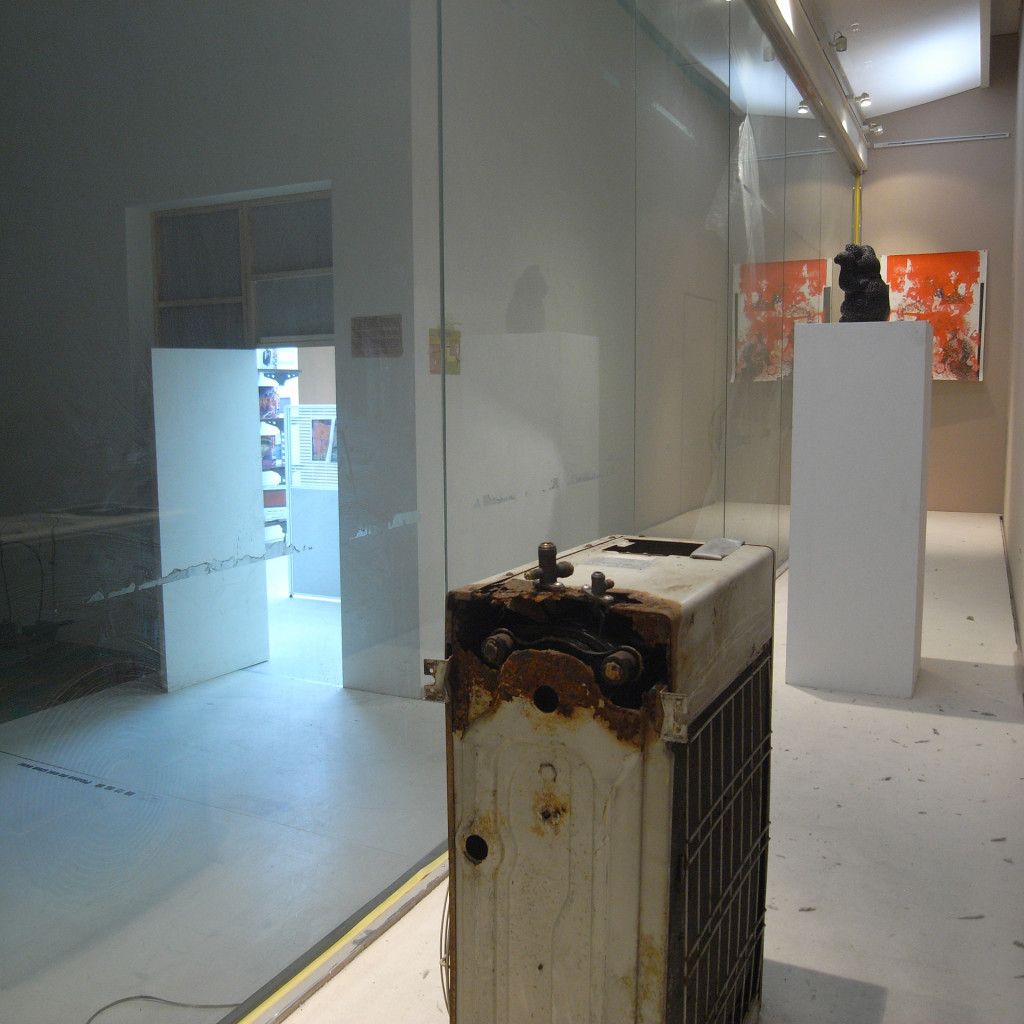
Jonah Freeman & Justin Lowe “Floating Chain (Fake Wall)” – a complex installation behind a fake wall, featuring a fake office, a mini-exhibition and a massage chair relaxation room – here the exit and ‘exhibition’.
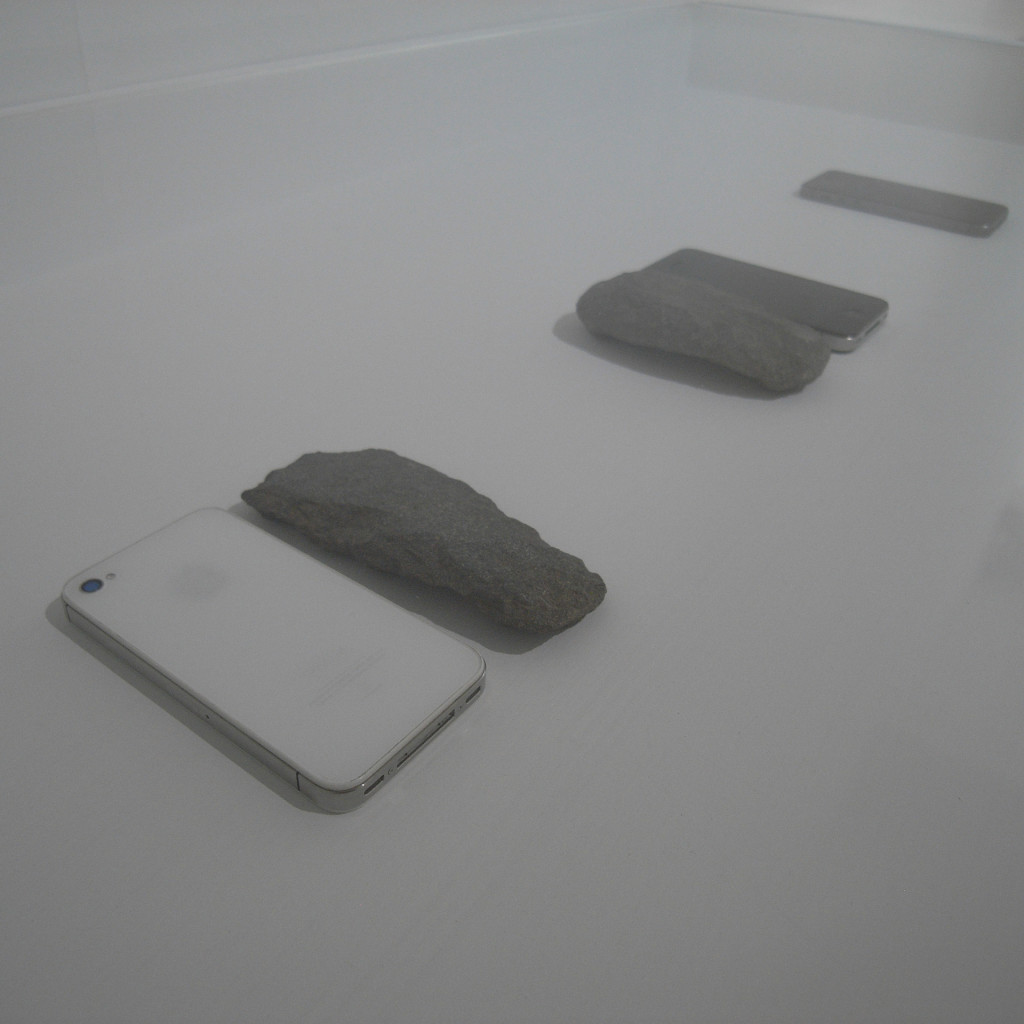
Shimabuku “Mobile Phone and Stone Tool” – the artist responsible for the living tortoise exhibit, here exhibiting phone-shaped stones (or stone-shaped phones?).
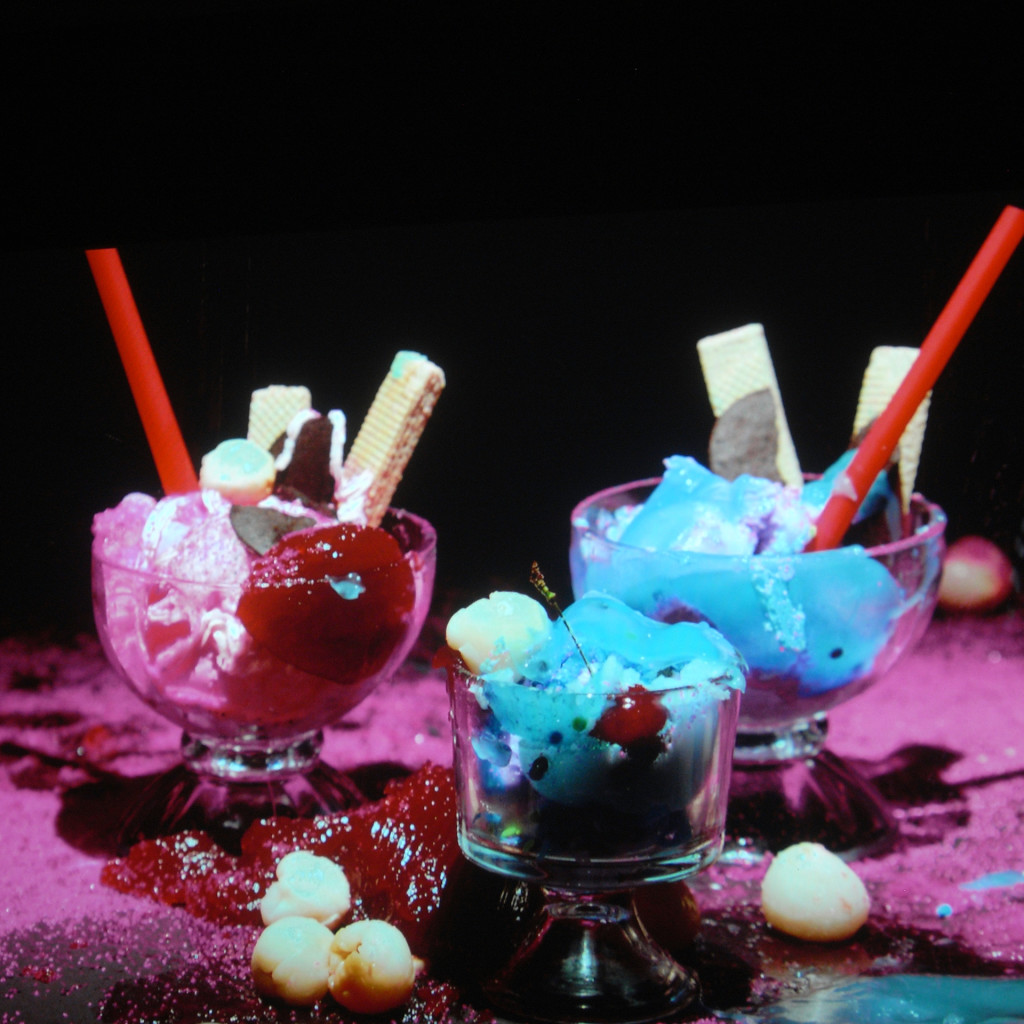
Jonah Freeman & Justin Lowe “Floating Chain” video projection still – the seductiveness of the movie set with food as actors.
